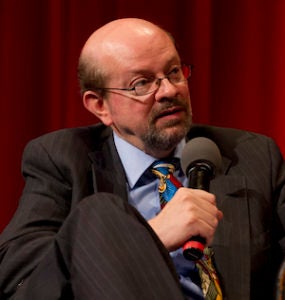
“To build upon the successes in 2019 in the years ahead, individuals must continue to challenge the idea that leadership, particularly that embodied by film directors, fits a masculine profile. Expanding the notion of what a director can look like, and how talent is judged will ensure that true and lasting change can be accomplished so that all women have access and opportunity to these jobs.”
Stacy Smith is the founder and director of the Annenberg Inclusion Initiative at the USC Annenberg School for Communication and Journalism. Her comments are excerpted from the recent report, “Inclusion in the Director’s Chair,” released in January 2020, which examines the gender and race/ethnicity of directors across 1,300 popular films from 2007 to 2019.
Contact: aii@usc.edu or (213) 740-7213
The language of cinema is universal

“Furthermore, the Academy’s failure to consider any of the actors in that film for any of the major acting categories, or the Asian American actress Awkwafina for her role in The Farewell, along with their refusal to give nods to women directors like Kasi Lemmons, Lulu Wang and Greta Gerwig — while heaping praise on masculinist titles like 1917, Joker and Once Upon a Time in Hollywood — doesn’t bode especially well for audiences who are yearning for nominations and awards that reflect a younger, more expansive demographic of filmmakers, as well as film fans.”
Karen Tongson is an expert in pop culture, suburban culture, gender studies, sexuality and gender politics. She is a professor of English and gender studies at the USC Dornsife College of Letters, Arts and Sciences.
Contact: tongson@usc.edu or (213) 740-2817
Visual effects broke new ground

“Avengers: Endgame has great performances from the Smart Hulk and Thanos digital characters, and the bigger-than-ever scope of its CGI battle sequences. 1917 blends both practical special effects (explosions, dead bodies) with precise computer graphics to link numerous individual takes into what appears to be one continuous shot. And Star Wars: The Rise of Skywalker ends the third trilogy on a high note, with epic space battles, scene-stealing digital and practical creatures, and successfully integrating unused footage of Carrie Fisher from previous films in new scenes to complete the arc of Princess Leia.”
Paul Debevec is an expert in digital visual effects, virtual reality, digital photography, holograms, video doctoring and virtual actors. He is the associate director of graphics research at the USC Institute for Creative Technologies.
Contact: debevec@ict.usc.edu or (310) 574-7809 or (310) 574-5702
Film music winners drive the emotions of theater goers

Jon Burlingame is an expert on film and television music. He is an adjunct professor at USC Thornton School of Music.
Contact: burling@usc.edu or (310) 473-5330
Ahead of the Oscars, USC Libraries Scripter Awards honored adaptations

Howard A. Rodman, a professor at the USC School of Cinematic Arts, is an expert in screenwriting and independent filmmaking. He is chairman of the USC Scripter Award Selection Committee, which recently celebrated its 32nd year.
Contact: hrodman@cinema.usc.edu or (213) 740-3303



